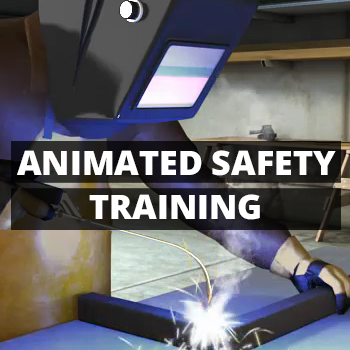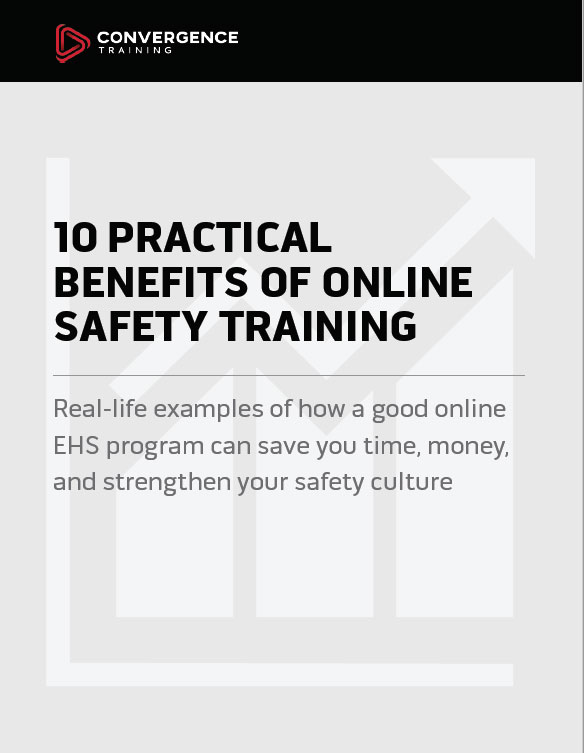 Safety training can come in many forms, media, or “delivery methods.” For example, there’s field-based training, classroom-style instructor-led training, written materials, video-based training, interactive eLearning courses, and more.
Safety training can come in many forms, media, or “delivery methods.” For example, there’s field-based training, classroom-style instructor-led training, written materials, video-based training, interactive eLearning courses, and more.
Learning experts recommend you use a mix or blend of many to get the best safety training at work. For example, that’s the recommendations from:
- ANSI Z490.1, the US national standard for Criteria for Accepted Practices in Safety, Health, and Environmental Training
- The classic book Evidence-Based Training Methods by Dr. Ruth Colvin Clark
- Dr. Will Thalheimer’s recent research study on the effectiveness of online courses and instructor-led training
- Our post on blended learning, including a free guide to blended learning
Within that blend learning solution for safety training, we recommend you make use of animations and even 3D animations in some instances. In this article, we demonstrate 10 amazing things you can do with animations to create more effective safety training. Check ’em out!
- Learning Management Systems
- Online Safety and Health Training Courses
- Custom Safety Training
- Incident Management Software
- Mobile Safety Training Apps
Benefits of Animation and 3D Animation in Safety Training
Before we go too far, let’s begin by making it clear what we mean by “animation” and “animation with 3D graphics.”
This video clip, made up on some highlights from Convergence Training eLearning courses, should help make it clear.
Now that you’ve got the general idea, let’s take a look at a few specific examples and benefits that the use of animation and 3D animation provides.
(The images in the safety training highlight video above and the samples from specific safety training courses below are all from our collection of online health and safety training courses.)
Illustrating Things That Are Too Dangerous to Film or Demonstrate in Real Life
Animation allows you to create a video that shows something that would be too dangerous to film or watch in real life.
For example, watch the short sample of the online Compressed Gas Cylinder Safety training course below.
Obviously, you wouldn’t want to shoot a cylinder of compressed gas through a wall or ceiling like this animated video shows. But showing it IS an effective way to demonstrate the dangers of these cylinders.
Showing “Hidden” Views
Another thing you can do with animated videos and 3D graphics that you can’t do with a normal video is show something that would ordinarily by hidden from view (and from a camera) in real life. As an example, check the online Metal on Metal safety training course sample below.
This hidden view makes it much easier to understand how to use the slide hammer and what it’s actually doing.
Making the Invisible Visible
By using animation, safety training can visually represent things that are normally invisible in order to increase your employee’s learning. For example, consider this sample from an online Pneumatic Tools Safety training course and notice how the sound waves created by the tool are represented visually to aid comprehension.
This kind of illustration makes it easier for your workers to immediately understand what the safety training is talking about.
Presenting “Break-Away” Views
Another benefit of animated safety training is that you can show a “break-away” view that explains how the different pieces of something fit together and what each piece is. For example, consider this sample from an online Steel Erection Safety training course.
The point when the base plate and anchor bolts are identified is something you can’t match with ordinary video.
Presenting Extreme Close-Ups and Zoom-Ins
Animations also allow extreme close-ups and “zoom-in’s” that help explain concepts. Take the sample from this online Mold Awareness training course as an example.
You can’t zoom in that closely on mold with your phone camera, can you?
Illustrating Abstract Concepts That Are Difficult to Explain or Visualize
Animation can also be a very powerful tool for explaining abstract concepts that are otherwise hard to explain or understand.
For an example, check out the sample from this online Forklift Safety training course below, and note how it visualizes the “stability triangle.”
The illustrated green triangle and the pendulum inside it that shifts as the center of balance shifts is a very effective way to illustrate the stability triangle and to demonstrate how the center of gravity on a loaded forklift changes.
Not Presenting Distracting Backgrounds
One effective way to help employees learn from safety training visuals is to “hide” or not present background details that may be distracting.
But that’s hard or impossible to do with photos and normal video.
But it’s easy to do with animated videos. Take the online Crane and Hoist Rigging Safety training course below as an example.
By not presenting the background, the animated video makes it easier for employees to focus on what’s important.
Adding Highlights to Further Explain
It’s also very easy to add highlights to animated video in order to explain things. The highlights used to illustrate blind spots in this sample from an online Heavy Equipment Visibility safety training course are a good example of that.
The highlights make it much easier for employees to immediately understand what blind spots are, where they are, why they exist, and (of course) how to avoid being in them.
Use of Icons for More Effective Communication
Icons can be a very effective way to communicate visually, and it’s easy to add icons to animated video. For example, consider the red Xs and green checkmarks in the online Hydraulic Fluid Safety training course below.
It’s not a BIG thing, but the Xs and checkmarks make it immediately obvious what’s safe and what’s not.
Adding Labels and Pointers
Another thing you can do very easily with animated videos is to add labels and pointers to make it clear what the audio is talking about. For example, watch this video from an online Welding Safety training course and see how the label and pointers help employees identify the filter plates.
This use of labels and pointers makes it easier for employees to immediately understand what’s being discussed and focus their attention appropriately.
Conclusion: Animations and 3D Animations Make Safety Training Better
That was a quick list of 10 ways animations and 3D animations can make safety training more effective. There are more ways, too, and we may return to this topic in the future.
Any ideas of your own?

Benefits of Online Safety Training
Wondering if you should make the plunge with online safety training? This guide gives 10 reasons why, each based on experiences at real companies like yours.

Awesome and highly efficient
We agree, Omar. Feel free to check out our courses and view some short samples here: https://www.convergencetraining.com/all-courses.aspx